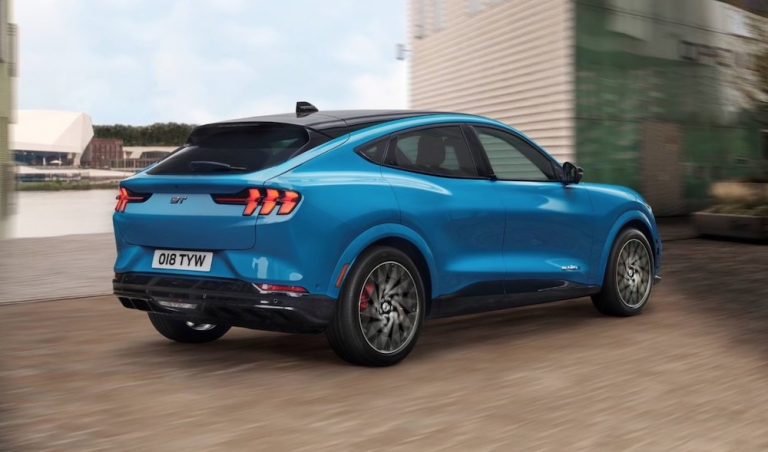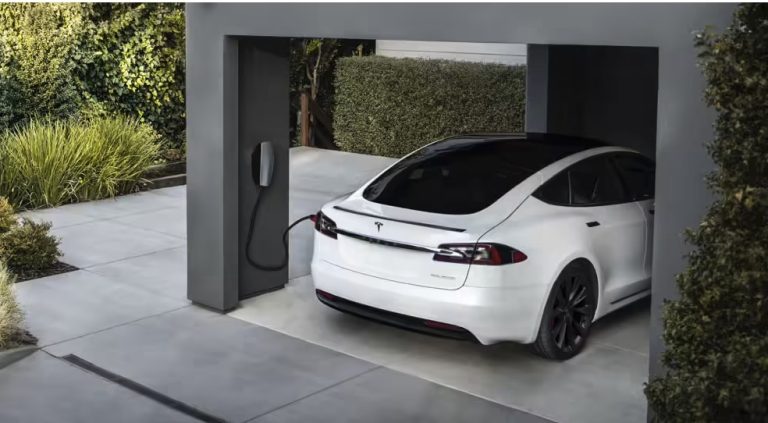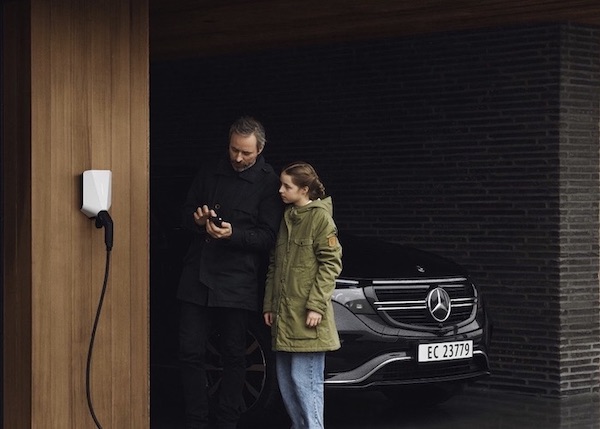The e-zoomed FAQ series: brief responses to pertinent questions related to driving an electric car! If you have a question, simply email us at shop-ie@ezoomed.com!
Electric Car Charging: The Basics
For those of you new to zero-emission electric driving, we recommend a read of the following articles:
Sign up to the e-zoomed Electric Living newsletter
What Is DC Charging?
It is true, in that, the majority of electric cars are charged at home, and usually overnight, via a dedicated AC (alternating current) EV charger. In general, we do not use DC (direct current) EV chargers for home charging. However, for public charging we use both AC and DC EV charging, but with a greater emphasis on DC electric car chargers.
One of the key reasons for the preference of DC EV chargers, for public EV charging, is that, DC EV chargers offer faster charging speeds. Put another way, an onboard EV battery can be charged faster using a DC electric car charger, compared to an AC EV charger. There are a number of reasons for the higher charging speeds for DC EV chargers. But one of the key factors is the location of the ‘converter’ that converts AC power, into DC, to be stored in the onboard EV battery. The power from the grid is always AC power.
When using a residential EV charger like myenergi zappi, the power is being converted from AC to DC, to be stored in the EV battery. Electric cars incorporate a ‘converter’ usually referred to as an ‘onboard charger’, to convert AC into DC when the electric car is charging. AC EV chargers do not incorporate a converter. The converter is always located within the electric car. Depending on the type of electric vehicle (EV), the onboard AC charger can vary between single-phase and three-phase.
Though most of the recent battery-electric vehicles (BEVs), incorporate a single-phase onboard AC charger (7.4 kW AC), many also offer a three-phase onboard AC charger (up to 22 kW AC). In contrast, plug-in hybrid electric vehicles (PHEVs) usually incorporate between a 3.6 kW AC and 7.4 kW AC onboard AC charger. This is not surprising, given the smaller on board EV battery in a PHEV.
Most homes in Ireland are powered by single-phase power supply. Therefore, even if the electric car has a 3-phase (22 kW) onboard charger, it will be limited to single-phase EV charging. Conversely, if the building is supplied by 3-phase power supply, and the onboard AC charger is limited to single-phase, the EV will only charge at single-phase. Most commercial buildings in Ireland are powered by three-phase power supply.
For those new to electric driving, an onboard EV battery, is in some respects similar to a fuel tank in an internal combustion engine (ICE), petrol or diesel vehicle. The larger the fuel tank capacity (litres), the more the fuel required for filling. Similarly, the larger the capacity (KWh) of the onboard EV battery, the more the energy required to recharge!
In AC EV charging, the impediment to achieving faster charging speeds is limited by the capability of the onboard charger (converter). In DC charging, though, there is a need to convert grid power (AC) into DC, it is done within the DC charger and not in the electric vehicle.
In DC charging, power is sent directly to the EV battery, bypassing the onboard EV converter. Hence the higher performance of DC EV chargers. In general, AC charging session take between 4 – 12 hours, while DC charging sessions between 15 minutes and 60 minutes. It is also worth noting, that public DC charging costs significantly more than residential AC electric car charging.
The majority of AC EV chargers are between 7 kW AC – 22 kW AC, but can be up to 43 kW. In the case of DC chargers, the majority are between 50 kW DC -250 kW DC. There are four primary charging speed categories for electric cars: slow, fast, rapid and ultra-rapid.
Of course, rapid and ultra-rapid DC chargers offer the fastest charging speeds, and these are often located at motorway services. Like for AC charging, DC charging speeds are limited to the onboard DC charging capability of the electric car. If an EV has a 50 kW DC charging capability, the maximum charging speed will be limited to 50 kW DC, even if the DC charging station offers a higher DC charging capability.
| Charging Times (Overview) | |
|---|---|
| Slow charging AC (3 kW – 3.6 kW): | 6 – 12 hours (dependent on size of EV battery & SOC) |
| Fast charging AC (7 kW – 22 kW): | 3 – 8 hours (dependent on size of EV battery & SoC) |
| Rapid charging AC (43 kW): | 10%-80%: 20 mins to 60 mins (dependent on size of EV battery & SoC) |
| Rapid charging DC (50 kW+): | 10%-80%: 20 mins to 60 mins (dependent on size of EV battery & SoC) |
| Ultra-rapid charging DC (150 kW+): | 10%-80% : 20 mins to 40 mins (dependent on size of EV battery & SoC) |
| Tesla Supercharger (120 kW – 250 kW): | 10%-80%: up to 25 mins (dependent on size of EV battery & SoC) |
Most DC charging sessions are up to 80% state-of-charge (SoC). This is to protect the onboard EV battery. Interestingly, the last 20% can take as long as it takes to charge up to 80%. Therefore best to charge up to 80% and charge up to 100% in the convenience of your home, overnight. Not all electric cars offer DC charging capability. In fact, most PHEVs do not offer DC charging, while most BEVs offer DC charging. Again, not surprising, given the smaller size of the onboard EV battery in a PHEV.
At an average, pure electric cars incorporate a DC charging capability between 50 kW DC to 100 kW DC. Of course, some pure electric cars offer far faster charging capability. As an example, the all-electric Tesla Model Y offers DC charging up to 250 kW DC. Put another way, the EV can add 150 miles in 15 minutes.
DC EV chargers vary in performance between 50 kW DC an up to 250 kW DC. The Tesla Supercharger network is a case in point, with most Tesla DC EV chargers offering up to 250 kW DC. Tesla is now in the process of introducing V4 of its Supercharger, capable of DC charging up to 350 kW DC.
In Ireland, not surprisingly, County Dublin has the largest number of public charging stations!
What Is The Difference Between AC and DC EV Charging?
| AC EV Charging | DC EV Charging |
|---|---|
| AC/DC converter in the EV | AC/DC converter in the DC EV charger |
| Charging speeds limited by the onboard EV converter | Charging speeds not as limited by the converter incorporated in the DC charger |
| Longer charging times | Shorter charging times |
| Cheaper charging tariffs | Higher charging tariffs |
| More widely available | Less widely available |
| Can charge at home | Cannot charge at home |
| EV Glossary | |
|---|---|
| Alternating Current (AC): | What is alternating current? Though we may not be familiar with this term, we use alternating current everyday in our homes to power our appliances! Alternating current is a type of electric current, in which the direction of the flow of ‘electrons’ switches back and forth at regular intervals or cycles. When an electric car is charged at home, the type of electric current used, is alternating current. |
| Direct Current (DC): | What is direct current? Direct current (DC) is a type of electric current that flows in only one direction i.e. uni-directional. DC enables the constant flow of electrons from an area of high electron density to an area of low electron density. DC is quite common in our day-to-day lives. Many of the appliances we use on a regular basis that are operated by batteries, use DC. A mobile phone, a laptop, a torch light etc. In electric cars, the onboard EV battery also uses direct current to store energy. |
Electric Vehicles (EVs): Jargons
There is no doubt, in that, for those new to electric driving, the terminology can be both daunting and confusing. We have chosen a few jargons to help you get more familiar with electric vehicles (EVs)! We also recommend reading our article ‘Electric Car Jargon Buster‘ for a more comprehensive list of terms.
| Glossary: Electric Vehicles (EVs) | |
|---|---|
| Battery-Electric Vehicle (BEV): | What is a BEV? A battery-electric vehicle (BEV) is more commonly referred to as a pure electric car. A BEV is ‘pure’, in that, the vehicle only uses electric power for propulsion i.e. a BEV does not have an internal combustion engine (ICE). It is easy to recognise these zero-tailpipe emission green cars, as these vehicles are silent (except for the artificial noise), and do not have a tailpipe! |
| Frunk: | What is a frunk? Though a frunk is not a new term, its availability is becoming more widespread with the development of electric vehicles (EVs). A frunk is a storage space/ compartment/ trunk in the front of a vehicle, rather than the rear. In the case of pure electric cars, given that these vehicles do not have an onboard internal combustion engine (ICE), there is space for a frunk. It is worth noting that a frunk is usually much smaller than a trunk, and in EVs, a good space for storing the EV cable. |
| Mild Hybrid Electric Vehicles (MHEVs): | What is a MHEV? Mild hybrids use both an internal combustion engine (ICE) and an electric motor. These cars are also known as ‘self-charging hybrids’. The vehicle uses regenerative braking (recuperated electric energy) to improve the fuel efficiency and to reduce tailpipe emissions (CO2 g/km). However, mild hybrids cannot be charged by an external power source, like an EV charger. |
| Plug-In Hybrid Electric Vehicle (PHEV): | What is a PHEV? Like a MHEV, a plug-in hybrid electric vehicle (PHEV) aims to increase the fuel efficiency and reduce tailpipe emissions. However there is much difference between a PHEV and a MHEV. A PHEV has a more powerful electric motor and a larger onboard EV battery. In a PHEV, the electric motor and onboard EV battery are also used to propel the electric vehicle. Moreover, a PHEV battery is charged by using an external power source, like a dedicated EV charger. |
| Regenerative Braking: | What is regenerative braking? Also known as regen braking or brake recuperation, regenerative braking is a process of capturing the wasted energy (during braking) from an electric vehicle, to be reused (recycled). In the case of electric driving, the ‘captured’ energy is reused to increase the pure electric range of the EV. |
While e-zoomed uses reasonable efforts to provide accurate and up-to-date information, some of the information provided is gathered from third parties and has not been independently verified by e-zoomed. While the information from the third party sources is believed to be reliable, no warranty, express or implied, is made by e-zoomed regarding the accuracy, adequacy, completeness, legality, reliability or usefulness of any information. This disclaimer applies to both isolated and aggregate uses of this information.





















